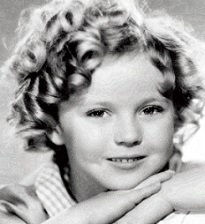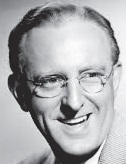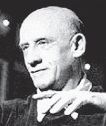REVIEW POTPOURRI: Film: Heidi; Bandleader: Kay Kyser; Conductor: Dimitri Mitropoulos
by Peter Cates
Heidi
starring Shirley Temple, Jean Hersholt, Mary Nash, etc.; directed by Allan Dwan; 20th Century Fox, released 1937, 88 minutes.

Shirley Temple
Recently, I watched this film for the first time in at least 54 years, via my copy of a colorized video-cassette, and was very entertained. The story of an orphaned girl, Heidi, sent to live with her grandfather – an embittered, aloof hermit living in the Swiss Alps – was a natural vehicle for the nine-year-old superstar who so endearingly played herself in several classics, my all-time favorite being Rebecca of Sunnybrook Farm. The gifted character actor, Jean Hersholt, portrayed the Gramps, Adolph Cramer, with depth and finesse while Mary Nash, Arthur Treacher, Sidney Blackmer, Helen Westley and a few others provided top-notch support elsewhere in the story.
Director Dwan shot the Alpine footage in and around Lake Arrowhead, California. Finally, during the on-location shooting, Shirley never went anywhere without at least eight bodyguards.
Kay Kyser
Huggin’ and Chalkin’; Columbia 37095, 10-inch 78,
recorded 1946.

Kay Kyser
Bandleader Kay Kyser (1905-1985) was a mildly entertaining showman who reached millions through film, radio and many Columbia 78s; the above hit record contains a forgettable novelty, Huggin’ and Chalkin’ and the lovely sentimental The Old Lamplighter, featuring one of Kyser’s several vocal groups from his heyday, Michael Douglas and the Campus Kids. Years later, Douglas would be better known for his network TV talk show, which was highly popular during the ‘60s and ‘70s !
Milhaud: Le Boeuf sur le Toit
Ravel: Le Tombeau de Couperin- Dimitri Mitropoulos conducting the Minneapolis Symphony Orchestra; Columbia ML 2032, 10-inch LP, released late ‘40s.
Dimitri Mitropoulos (1896-1960) was one of the great conductors of the last century and directed the Minneapolis Symphony from 1939-1949 and the New York Philharmonic from 1949-1958. He made a pile of recordings with each orchestra, mainly for Columbia Reords. Also he conducted a number of productions at the Metropolitan Opera during the ‘50s.
His conducting was distinguished by the following characteristics:

Dimitri Mitropoulos
A. He had an unusually photographic memory and conducted without a score in front of him on the podium.
B. He was a brilliant pianist and conducted and played concertos at the same time, again from memory.
C. He promoted many 20th century composers through concerts and recordings, particularly Mahler, Shostakovich, Berg and Schonberg.
D. His performances were intensely exciting.
He was also one of the most giving, generous human beings who ever lived. For example, during his New York years, he took a room at a cheap hotel, ate at greasy spoons and cafeterias and commuted by public transportation, in order to help as many people as possible with different financial needs.
Unfortunately, there were those who took advantage of him time and again. His kindness may have caused discipline problems with selfish and disrespectful New York Philharmonic players but this is a story for another time.
Interestingly, his earlier ten years in Minneapolis were different in that the orchestra gave him total respect and love. As an example, the above LP features works by two major 20th century composers – the very perky showpiece, Le Boeuf sur le Toit, or The Nothing Doing Bar, by Darius Milhaud, and the graceful and sublime Le Tombeau de Couperin of Maurice Ravel – in performances from Minneapolis that were a credit both to some of Mitropoulos’s earlier mentioned gifts and the mutual rapport between him and the players.
After leaving his New York post, Mitropoulos was very busy guest-conducting in Europe with great success, but the terrible diet, the brutally excessive chain smoking, the onerous work load with the Philharmonic and elsewhere, and the refusal to follow doctor’s orders to relax more after a major heart attack during the late ‘50s probably led to his sudden death in November 1960, while rehearsing the Mahler 3rd Symphony with Italy’s La Scala Orchestra.
Many Mitropoulos performances, including the Ravel, can be heard on YouTube!
Responsible journalism is hard work!
It is also expensive!
If you enjoy reading The Town Line and the good news we bring you each week, would you consider a donation to help us continue the work we’re doing?
The Town Line is a 501(c)(3) nonprofit private foundation, and all donations are tax deductible under the Internal Revenue Service code.
To help, please visit our online donation page or mail a check payable to The Town Line, PO Box 89, South China, ME 04358. Your contribution is appreciated!



Leave a Reply
Want to join the discussion?Feel free to contribute!